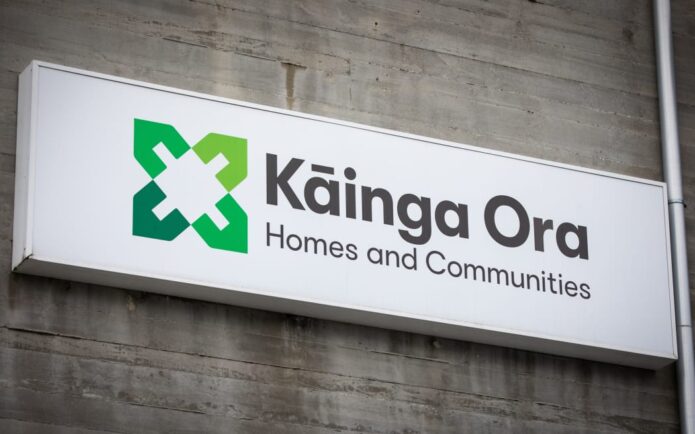PHOTO: Reports from property agents and private data providers paint a grim picture. ATP
SHANGHAI – According to official data from China, the housing market of the nation has shown remarkable resilience despite sluggish economic growth and developers facing unprecedented defaults.
Government figures indicate a mere 2.4% decline in new-home prices from their peak in August 2021, while existing home prices have dropped by 6%.
However, reports from property agents and private data providers paint a much grimmer picture.
https://propertynoise.co.nz/au/chinas-financial-system-could-collapse-what-the-reserve-banks-evergrande-bombshell-means-for-australia/
These sources reveal that existing-home prices have plummeted by at least 15% in prime neighborhoods of major cities like Shanghai and Shenzhen, as well as in more than half of China’s tier-2 and tier-3 cities. In areas close to Alibaba Group Holding’s headquarters in Hangzhou, local agents state that existing home prices have fallen by around 25% since late 2021.
Though making direct comparisons is challenging, industry experts and economists suggest that China’s official home price indexes likely underestimate the depth of the downturn. This is partly due to methodologies that struggle to accurately capture shifts in the market.
This discrepancy raises concerns among investors regarding the reliability of timely economic data in China, especially as access to information has become more restricted under President Xi Jinping’s government. It also brings into question whether policymakers truly comprehend the market conditions when devising strategies to boost demand. Additionally, potential homebuyers might remain cautious, waiting for officially reported price drops before entering the market.
https://propertynoise.co.nz/au/chinas-property-bubble-may-be-about-to-burst/
Unlike China’s methodology, which relies on surveys rather than transaction-based price data, the widely used S&P CoreLogic Case-Shiller indexes in the United States are built upon home-price data collected from local deed recording offices across the nation.
For Henry Chin, a veteran in global real estate market research, the credibility and accuracy of the data are of utmost importance.
“Home-price data in many countries are based on total market transactions, yet China uses selective samples,” said Chin, who serves as the head of research for Asia Pacific at CBRE Group. “When a market goes down, the true market condition is hard to be reflected in such data.”
China’s statistics bureau explains online that raw data on new-home prices comes from all registered sales and purchases within local housing transaction bodies. Regarding existing-home prices, it is a combination of key project sales and surveys. The NBS (National Bureau of Statistics) uses the Laspeyres price index, a common formula globally, for calculating its 70-city home-price index. Nonetheless, there remains ambiguity about the sampling and index calculation methods.
Survey-based data may serve to smooth out extreme fluctuations, but as Alicia Garcia Herrero, Chief Asia Pacific Economist at Natixis SA in Hong Kong, notes, when people fear that prices are dropping even further and hold back from buying, such data loses its intended purpose.
https://propertynoise.co.nz/au/chinas-property-bubble-may-be-about-to-burst-and-it-could-cost-australia-dearly/
In Hangzhou, near Alibaba’s headquarters, home prices in some neighborhoods have fallen by 25% to 28% from their peak around October 2021, according to local agents. In Lianyang, a downtown area in Shanghai popular among expats and financiers, residential prices have declined by 15% to 20% from their record highs in mid-2021.
Even before a recent slowdown in March, over half of tier-2 and tier-3 cities experienced existing-home price drops exceeding 15% from their peaks, as per a report from Guolian Securities economists referencing data from KE Holdings, an existing housing transaction services provider. The economists cautioned that actual declines from the peak might be steeper, given that the agency only started compiling data from November 2018.
Not even top-tier cities, once thought to be resilient against a housing downturn, have been immune. In at least five sought-after districts in Shenzhen, existing home prices have fallen by 15% over the past three years, according to a July report by property research institute Leyoujia. Shenzhen, a southern economic hub, holds the title of China’s least affordable housing market.
Mr. Wang, in a report, wrote, “Property weakness is perhaps the most challenging growth headwind amid China’s ongoing post-reopening recovery, and thus the momentum and sentiment in the property sector have significant implications for growth and policies.”
The discrepancy in perception regarding home prices is partially due to the diverse range of policy tools at the disposal of the authorities. While countries such as Australia, Singapore, or the US tend to tighten loan-to-value limits or raise interest rates, China can take measures like banning non-locals from purchasing homes in certain cities or limiting the number of properties one can own.
“The weaknesses in housing price statistics hardly makes things better,” said Bert Hofman, former China country director for the World Bank, who is currently at the National University of Singapore. This situation “may now work against determining the right policy to stabilize the market.” (Source: Bloomberg)













